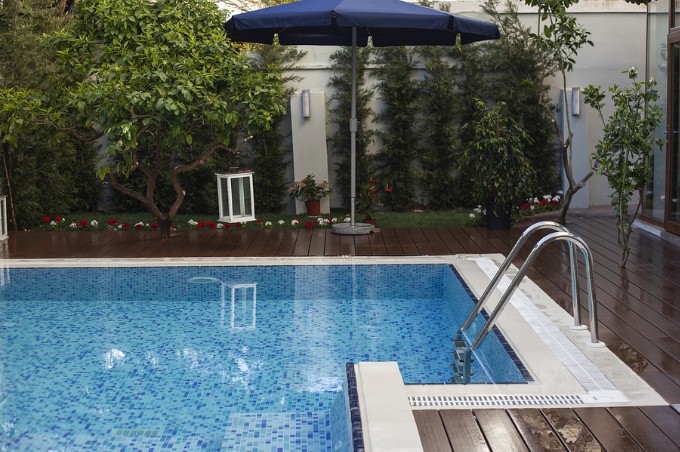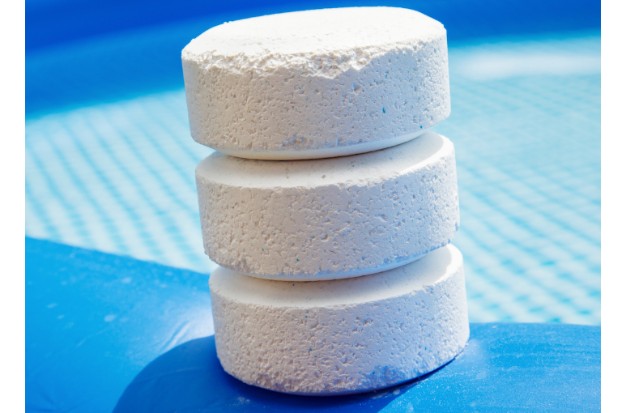How Often Should You Add Chlorine to Your Pool?
You must examine two values in order to maintain a healthy pool. One the one hand, the ideal pH range is 7.2 to 7.6.
You must also maintain the proper level of chlorine in the water. The chlorine level should ideally range from 1 to 1.5 ppm.
We advise checking these values twice a week during the swimming season. The Blue Connect Plus is one example of a digital test kit, but manual test kits are also an option. Every hour, this device takes an automatic measurement of the water quality and sends the results to a smartphone app.
How Frequently Should A Pool Be Treated With Chlorine?
To keep the water in swimming pools clean and bacterium-free, chlorine is frequently added. Typically, chlorine should be added to a pool once per week. However, chlorine may need to be added more frequently if the pool is being used more frequently or if the weather is hot and sunny.
Contrarily, chlorine can be added less frequently if the pool isn’t being used much or if it’s chilly and overcast outside. In order to keep a swimming pool a safe and healthy environment, chlorine should be added as needed.
Normally, I add one gallon of liquid or granular chlorine every two weeks for every 10,000 gallons of pool water. In addition, I put two 3-inch chlorine tabs (trichlor chlorine tablets), in my pool’s skimmers weekly.
The precise amount of chlorine you must add to your pool depends on a number of variables, so this approach might not be effective for you. such as the type of chlorine you use, the size of your pool, and the chemistry of your pool water.
The majority of chlorine product manufacturers specify how much chlorine to add to your pool in their instructions. However, in addition to following those instructions, you must test your water using a chlorine water test kit. This will reveal the precise amount of free chlorine that is currently present in the pool. Ideally, the free available chlorine should be between 1-2 pp,
Undoubtedly, a pool with an excessive amount of free chlorine does not require more. Keep in mind that water chemistry can change quickly, so you might want to run additional tests to get precise results.
The presence of algae, however, is a sign that your pool requires more chlorine. To combat this, you might need to shock your pool once every two weeks or weekly.
How Is Chlorine Shock Treatment Carried Out?
The following step-by-step procedure can be used to shock your pool’s chlorine level.
- The pH level of the water in the pool must be just right (between 7.2 and 7.6) before you add the chlorine granules. Add pH-plus or pH-min as necessary to achieve this.
- Before adding chlorine evenly to the entire pool, dissolve the powder in a bucket of water. Ideally, you should open the pack away from the wind and in the open.
- Three measuring cups of 40 grams of chlorine granules per 10 m³ of water should be added for the chlorine shock treatment. To ensure that the product can spread evenly throughout the pool, this should ideally be added after swimming or in the evening.
- Following the addition of the chlorine, make sure the water has been filtered. The swimming pool’s chlorine treatment will be more effective as a result.
- At frequent intervals, preferably once per week, check your water for chlorine. The ideal range (> 1 ppm and 1.5 ppm) is between 1 and 1.5 mg per litre of water.

Factors Increasing The Need For Chlorine In Your Pool
It may seem difficult to keep a safe swimming environment, but all it requires is monitoring the pH and chlorine levels.
A test kit will allow you to monitor those levels. The need to add chlorine to your pool may increase due to some factors that cause lower free chlorine levels.
Sunlight
One of the many elements that affects the amount of chlorine in your pool’s water is ultraviolet radiation.
Bacteria flourish as water warms, necessitating the use of free chlorine to combat them. Additionally, it dries out and releases chlorine into the atmosphere.
Start Of Swim Season
You might not use your pool all year long depending on where you live. If so, be sure to give it a thorough cleaning before using it for the first time this year.
At this time, shocking your pool is also crucial. To achieve this, you must first treat your pool with a significant amount of chlorine to raise the levels.
The reason for this is that after the season has ended, your pool will have little to no chlorination.
Frequency Of Use
Several times a day, some pools are used. Even in the height of the season, some are neglected and only occasionally host swimmers.
The more people or animals that visit your little oasis and leave sweat and dead skin cells behind, the more chlorine you will need to add.
The Amount Of Time You Spend In The Pool
The added chlorine in the pool degrades more quickly than usual when there is a lot of swimming going on. You will need to add chlorine more often than someone who only swims once or twice a week if you spend a lot of time in the pool or host frequent pool parties.
If you regularly swim in the pool, you should chlorinate it at least twice or three times per week. However, you might think about chlorinating your pool once a week if you don’t use it frequently. You can control the chlorine level by checking the water quality every other day.
You can make sure that the chlorine levels stay within the acceptable range of 2.0 to 4.0+ ppm by performing routine water level tests. It will also enable you to determine if any unusual activity led to an increase in pollutants.
Things To Keep In Mind When Adding Chlorine To Your Pool
There are a lot of considerations to make when adding chlorine to the pool.
- Chlorine should not be added to water directly. Add a bucket of water to the mixture, then slowly pour it into your pool. The pool surface may deteriorate if chlorine is added directly to the pool.
- As we already mentioned, UV rays can reduce the amount of chlorine in your pool. Use a pool cover in sunny weather if you want to save a few dollars while keeping your pool safe.
- Aim to avoid shocking your pool during the day. It is much better to add chlorine at night because the UV rays can easily negate its effects. This way you won’t even have to cover the pool
- In the long run, it can cost you a lot of money to neglect your pool during the fall or winter. At the conclusion of the season, opening a clean pool is much simpler. So it makes sense to chlorinate the pool before winterizing it.
- To determine the precise amount of chlorine you need, use pool test kits. You and your pool could be in danger from over- or under-chlorination.
Conclusion
Naturally, if you want to get the most out of your pool, you should regularly add chlorine to it. But determining how frequently you should do it can be challenging. This article on how frequently to add chlorine to a pool should help you keep the proper level of chlorine.
